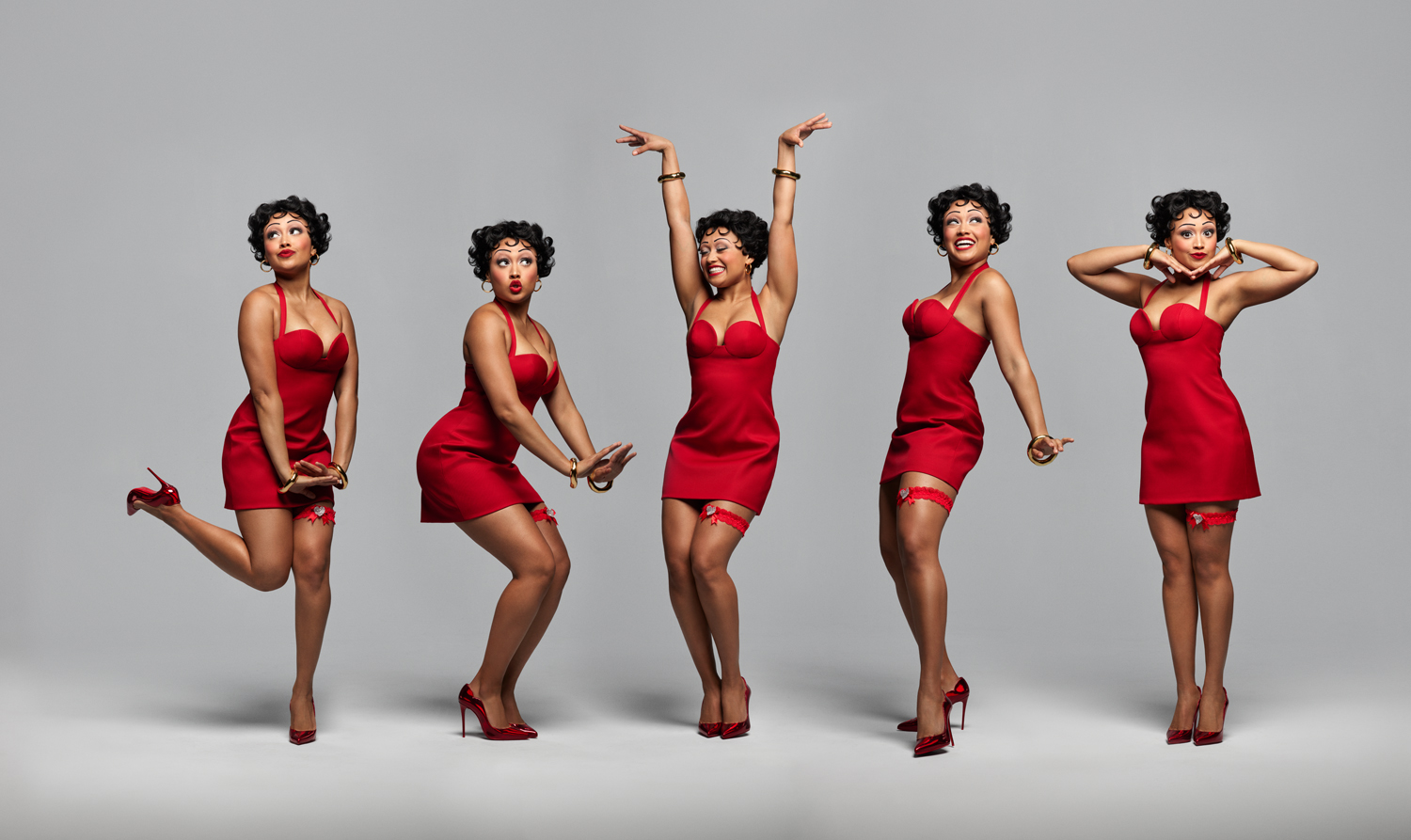Jerry Mitchell on Bringing Betty Boop From the Past to the Present
One of Dance Magazine’s 25 to Watch back in 2003, Jerry Mitchell is now among Broadway’s leading lights. The Tony Award winner’s latest role is director and choreographer of the long-gestating musical theater treatment of Betty Boop, a black-and-white cartoon character who first appeared in 1930. A curvy and coquettish adventurer who moved with vaudeville-era verve, Betty Boop ran into the Hays Code, a set of movie industry regulations adopted in 1934 that prohibited certain depictions of sexuality (as well as violence). While the character dressed more modestly thereafter, BOOP! The Betty Boop Musical promises a thoroughly modern take on the movie star, as played by Jasmine Amy Rogers of the Mean Girls national tour.
BOOP! runs November 19 through December 24 at Chicago’s CIBC Theatre, ahead of an anticipated 2024 transfer to Broadway. As he readies the show for its big debut, Mitchell took a moment to discuss how it brings a cartoon icon to the stage.

Do you recall when you first encountered Betty Boop?
I saw her when I was a kid. My aunts had Betty Boop this and Betty Boop that. I did see a lot of the shorts, not when I was young but when I was in college.
Are you borrowing any movement from the original cartoons?
Not really. The opening number is a gigantic tap routine. It starts as if you’re watching a black-and-white short, and then you go from watching it to being on the set where the short is being made. So it comes to life, so to speak, but it stays in a black-and-white world and it stays kind of two-dimensional.
I noticed BOOP! is being marketed as a family-friendly show, which surprised me. The promotional images suggest the early-1930s, pre–Hays Code Betty, with the garter belt and the hoop earrings. Is she the blueprint for this show’s Betty?
That, in my opinion, is the Betty. Betty was always the strong, sexy girl. She was never afraid of that.
Dozens of performers have portrayed Betty Boop in voice or image since she first appeared. Does the show nod to the many artists who are part of her lineage?
Though I think people will make those connections and find those reference points, none specifically were intended. I went looking for the character in the story that was written, and finding out how best to portray that character was how I came up with what’s in the show.
BOOP! also features a marionette by Phillip Huber, whose work on Being John Malkovich is extraordinary. What can we expect from the puppetry?
You can expect to see [Betty Boop’s dog,] Pudgy. [Laughs] Phillip and I have known each other for quite a long time. When BOOP! came along I thought, Do I call [theatrical animal trainer] Bill Berloni and get a real dog? And then I thought, No—I call Phillip and get a marionette.
I think of most choreography as some balance of attention to steps and to movement qualities. My impression, based on shows I’ve seen and interviews you’ve given, is that you want the choreography to serve the storytelling.
It’s almost always that way for me: story first, steps and style second and equally. I worked with Jerry Robbins and Michael Bennett: two great examples, right? There aren’t many similarities between the steps in West Side Story and the steps in Fiddler on the Roof, or the steps in The King and I, other than the fact that they were done by the same choreographer. Style is the last thing Jerry thought of, story was the first thing he thought of, and humor was right up there at the top, too. Michael? Same thing. Fosse was quite the opposite. Everything had his distinct style.
You’re experienced in historic dance reconstruction, through your work on Jerome Robbins’ Broadway and other projects. Has BOOP! been an opportunity to tap into those skills?
Those skills never leave me. They’re in the room with me every time I work on a show. I go home after every rehearsal and I go, What would Michael [Bennett] have thought? What would Jerry [Robbins] have thought? What would Ron Field have thought? What would Onna White have done? Right? I mean, these are all people I worked with and collaborated with and assisted when I was a dancer myself.
Is there anything else that you’d like to share about the show?
Rachelle Rak and Jon Rua are my associate choreographers who are laying it down fast and thick. We have some of the greatest dancers in a musical that I’ve had in a long time, which is important because there’s a lot of dance, particularly in the first act. It’s gonna be fun.




